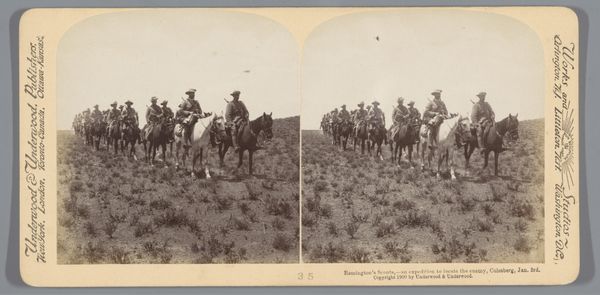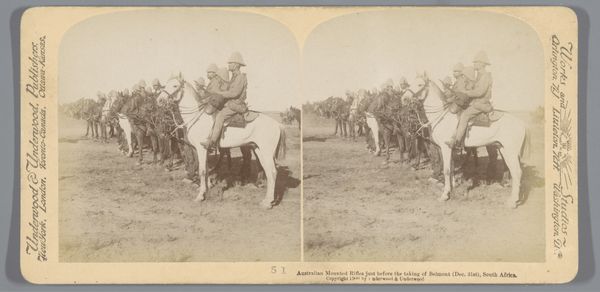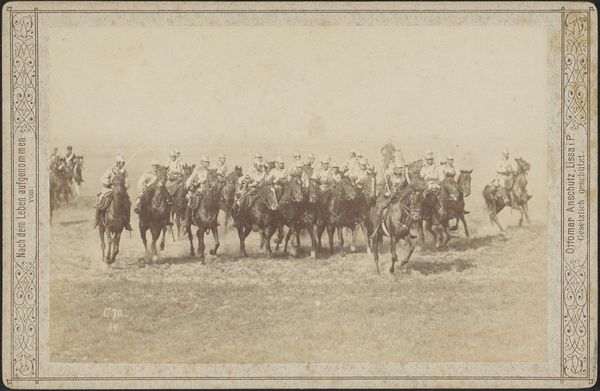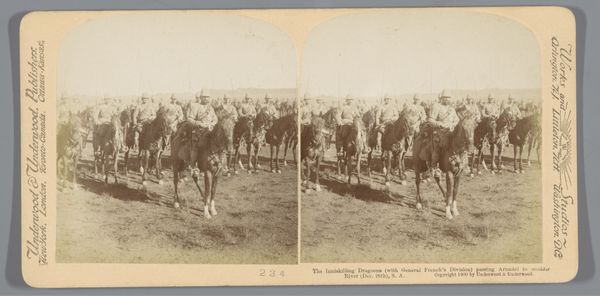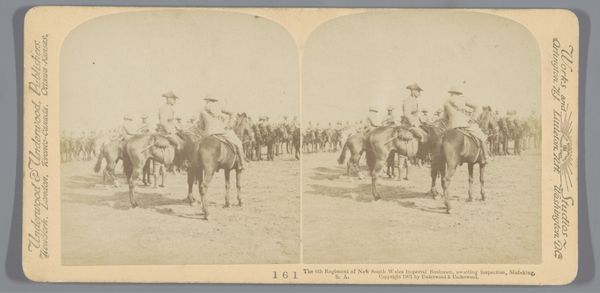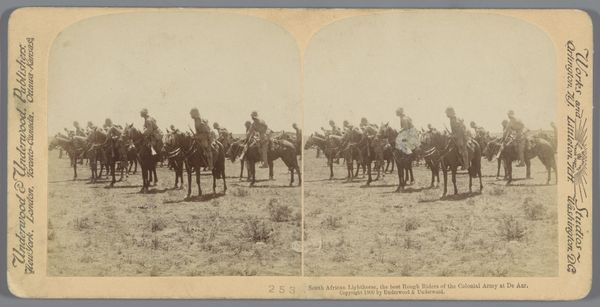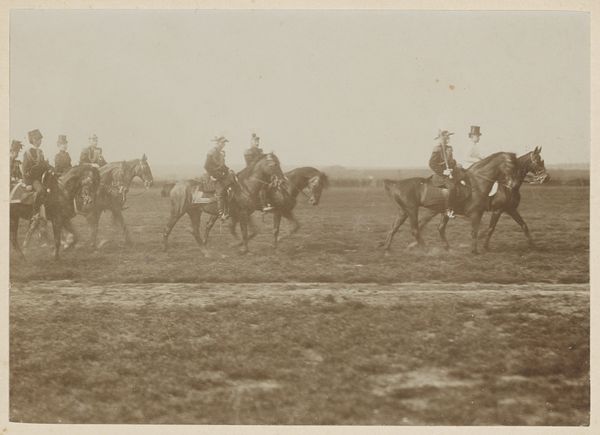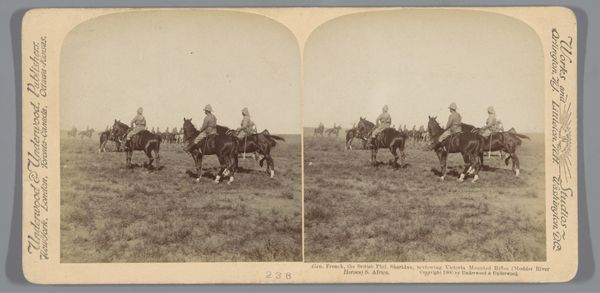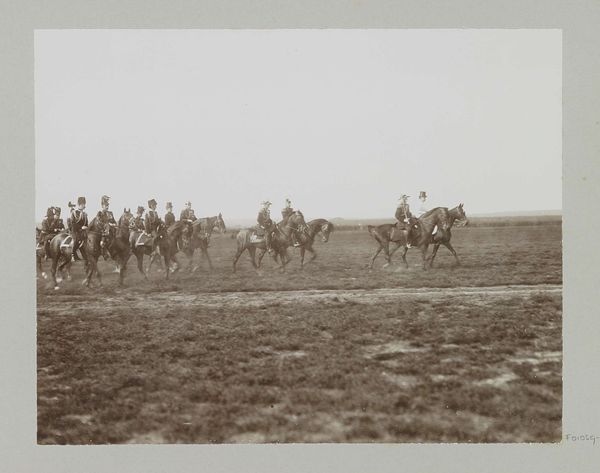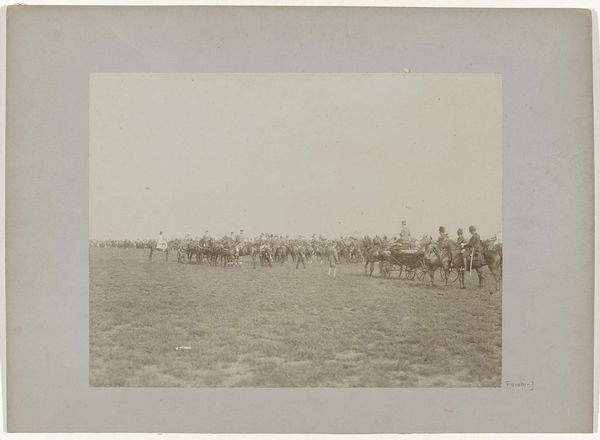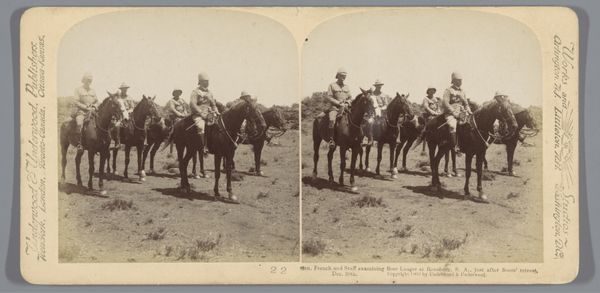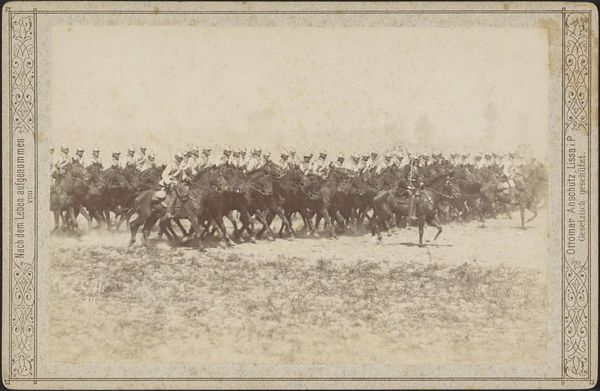
De New Zealand Mounted Rifles nadat zij een aanval van de Boeren hebben afgewend in Rensburg, 15 januari Possibly 1900 - 1915
0:00
0:00
print, photography, gelatin-silver-print
# print
#
landscape
#
photography
#
gelatin-silver-print
#
history-painting
#
realism
Dimensions: height 88 mm, width 178 mm
Copyright: Rijks Museum: Open Domain
Curator: This gelatin-silver print, possibly dating from the period between 1900 and 1915, shows "De New Zealand Mounted Rifles nadat zij een aanval van de Boeren hebben afgewend in Rensburg, 15 januari". The anonymous photograph captures the aftermath of a skirmish during, I believe, the Second Boer War. Editor: There’s a solemn weariness radiating from this image, a sepia-toned dirge almost. Look at how the dust kicks up from the horses' hooves, blurring the lines between the men and the harsh landscape, creating an overall effect that really captures an oppressive atmosphere. Curator: The photo was taken to portray British and colonial soldiers, in this instance, New Zealand mounted riflemen, after repelling a Boer attack. Consider how photography was then developing as a medium for shaping public opinion. Images like these played a crucial role in visualizing and disseminating a particular narrative of the war, reinforcing notions of British strength and colonial unity. Editor: I see the repeating motif of horse and rider, echoing centuries of warrior iconography. Even though this is 'modern' warfare, these figures draw from very ancient symbols. Each rider embodies dominion, a certain mastery over both beast and land. The column stretching to the horizon really underlines the visual power dynamic. Curator: Indeed. These are carefully constructed representations designed to be disseminated widely to inspire support. Look at how this campaign becomes synonymous with civilizational virtue by representing warfare in certain controlled terms: the landscape is barren, certainly, but their actions present the solid face of empire as the rightful tenant, subduing chaos by repelling an 'attack'. Editor: Despite this calculated presentation of authority, the dust seems to obscure their triumph. They don't seem heroic, necessarily; there is no flag-waving pageantry. Instead, I notice that the faces of the riders remain obscured by helmets and shadow, hinting at the anonymity of war. They carry the weight of conflict but they are visually, and perhaps actually, indistinct from it. The symbolism speaks of the human cost no matter what 'side' they represent. Curator: A sobering observation that I completely agree with. Such an image is a reminder of how deeply interwoven the historical portrayal of war and individual human experience remains, despite obvious intent to produce something stirring for contemporary society. Editor: A fascinating glimpse into both national projection and its human elements through enduring iconography, for sure. It leaves one thinking long after seeing the image, doesn't it?
Comments
No comments
Be the first to comment and join the conversation on the ultimate creative platform.
